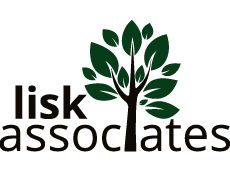Competencies are personal skills or talents you need to do your job well. Competencies are the most developable area of your personal talent report.
I have created a brief video on competencies here: Competencies
While the personal talent report does a good job of listing the competencies and the scores, you will now need to go do something to develop the skills you need for your job.
First, determine which of these competencies you most need for your job. You may have a Lisk Associates job benchmark highlighting the top competencies needed for your job. If you have this list, compare your scores to the benchmark to determine where you are already great and where you need work. You may reach out to me ([email protected]) and I will tell you if I have the competencies list for your job. If you don’t have a job benchmark, no worries, you have options. One option is, Lisk Associates could create a job benchmark for your position which would determine the top 7 competencies for your position (there is a small charge for this service). Or, you could do-it-yourself and simply look down the list to determine the top 7 competencies most important for your job.
Once you have determined the top competencies for your job, you need the “How To” guide. There are three places for How To:
#1. TTIDevelopment.com – This is a free do-it-yourself website offering from TTI. While the price is right, the content lacks the action items you may be looking for. If you are looking for a deeper definition for each skill and an accountability template, this would work. I have attached the worksheet for Self Management here.
#2. The Complete Leader – The Complete Leader was co-authored by Ron Price and my dad, Randy Lisk. The book works well as a field guide with one chapter devoted to each of the 25 competencies. The book retails for $49.95. Example: Self Management chapter is 7 pages covering “What is self-management”, “Why is self-management important”, and “How is self-management learned”. There are suggestions and potential exercises sprinkled in. There is value in this as the off-the-shelf handy reference guide.
#3. TheCompleteLeader.org/competencies – Lisk Associates has partnered with TheCompleteLeader.org/competencies specifically for competency development.
Sticking with our same example for the competency of Self-Management, TheCompleteLeader.org has 46 different references for Self-Management here. The content has ideas, articles, videos and an action-oriented coaching guide for each competency. While it’s the most expensive option at $199 for a 1-year subscription, it meets the Lisk Associates 5x ROI model as I believe anyone with minimal effort will get over $1,000 of skill development return on this investment.
Reply back to me ([email protected]) and we will set up your account today. We offer discounted site licenses for your team, department, business, or organization.
Thank you for your partnership with Lisk Associates.

